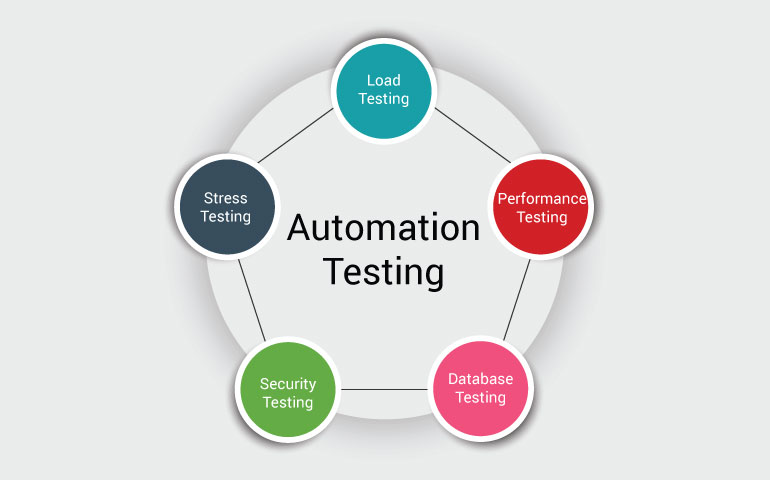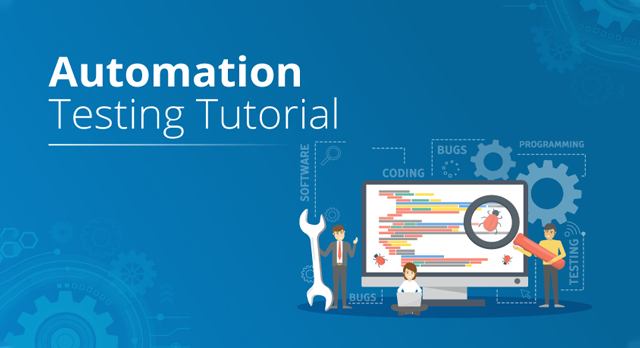Automation Testing Frameworks: Simplifying Intricate Testing Scenarios
Automation Testing Frameworks: Simplifying Intricate Testing Scenarios
Blog Article
From Guidebook to Automated Screening: A Comprehensive Overview to Transitioning Smoothly and Efficiently
In the realm of software application testing, the change from guidebook to automated processes has come to be a progressively essential shift for organizations seeking to enhance performance and accuracy in their testing techniques. The journey from manual to automated screening is not without its challenges, yet when approached tactically and with a clear plan in mind, the advantages can be considerable.
Advantages of Automated Evaluating
Automated testing offers countless benefits, enhancing effectiveness and precision in software program development procedures. Automated examinations can be run concurrently on multiple gadgets and operating systems, significantly speeding up the testing stage compared to manual testing.
Moreover, automated screening ensures a greater level of precision in identifying problems. Because automated tests adhere to predefined scripts, human mistake is minimized, causing more trusted test results. Uniformity in testing is additionally improved, as automated examinations carry out the same steps exactly each time they are run. This uniformity is crucial in guaranteeing that all performances of the software application are thoroughly examined, reducing the likelihood of unnoticed insects slipping through to production.
Selecting the Right Devices

First of all, examine your demands and goals. Understand the range of your project, the modern technologies entailed, and the ability of your group. This evaluation will aid you figure out the attributes and capabilities you need in your testing devices.
Secondly, take into consideration the compatibility of the tools with your existing procedures and systems. Smooth combination with your current software development lifecycle is important to guarantee a smooth transition to automation.
Additionally, evaluate the scalability and adaptability of the tools. As your testing needs progress, the devices ought to have the ability to adjust and suit adjustments successfully.
Finally, consider the support and neighborhood around the tools. Durable assistance and an energetic user area can offer valuable resources and help when implementing automated testing. By meticulously thinking about these facets, you can pick the right devices that line up with your needs and set the stage for an effective change to automated screening.
Writing Effective Examination Manuscripts

When crafting test manuscripts, it is important to consider the particular requirements of the software program being tested and guarantee that the scripts address all critical capabilities. Clear and descriptive naming conventions for examination scripts and test instances can boost readability and maintainability. Additionally, incorporating error handling devices within the test scripts can assist in recognizing and addressing issues without delay.
Additionally, arranging test scripts right into modular parts can improve reusability and scalability, minimizing redundancy and improving performance in examination her explanation script upkeep. Routine testimonials and updates to examine scripts are crucial to equal developing software needs and functionalities. By following these concepts, testers can create efficient and durable test scripts that contribute dramatically to the success of automated testing procedures.
Integrating Automation Into Workflows
Effective combination of automation devices into existing workflows improves and enhances procedures productivity within software advancement cycles. When integrating automation right into operations, it is vital to recognize recurring tasks that can be automated to conserve time and decrease human error. By perfectly incorporating automated testing tools like Selenium or Appium right into the software program advancement lifecycle, groups can accomplish faster responses on code changes, leading to quicker insect discovery and resolution. This assimilation permits continual screening throughout the development process, ensuring that any problems are identified at an early stage, causing greater software application quality. In addition, automation can be made use of to activate examinations immediately after each code dedicate, offering instant recognition and freeing up testers to concentrate on more complicated circumstances. Correct combination of automation tools needs cooperation between development, screening, and procedures teams to establish a unified workflow that enhances performance and efficiency in supplying premium software program products.
Making Sure a Smooth Transition
Efficiently transitioning to automated testing involves meticulous preparation and mindful execution to decrease disturbances and make the most of performance in the software application advancement procedure - automation testing. To make sure a smooth change, it is important to start by conducting a comprehensive analysis of the existing screening procedures and recognizing areas where automation can bring the most significant benefits. Engaging with all stakeholders at an early stage while doing so, including programmers, testers, and task managers, is critical for garnering assistance and buy-in for the automation initiative
Communication is vital throughout this change stage. Clear interaction of the goals, benefits, and expectations of automated screening assists to manage any resistance or issues that might arise. Additionally, providing appropriate training and sources for team participants to upskill in automation devices and strategies is vital for making certain a successful shift.

Conclusion
To conclude, transitioning from guidebook to automated screening uses many benefits, consisting of boosted effectiveness and integrity. By picking the suitable tools, composing reliable test scripts, and incorporating automation perfectly into process, companies can make certain a successful and smooth shift. It is important to welcome automation as a valuable asset in software program testing procedures to improve general quality and productivity.
In the realm of software application screening, the shift from guidebook to automated procedures has come to be a progressively vital shift for companies seeking to boost performance and accuracy in their testing methods. Automated examinations can be run all at once on numerous devices and operating systems, considerably speeding up the testing stage contrasted to manual screening. Consistency in testing is also boosted, as automated tests perform the exact same steps precisely each time they are run.To guarantee the effective execution of picked screening devices, the production of efficient examination manuscripts plays More about the author a crucial duty in validating the performance and performance of automated processes - automation testing. By complying with these principles, testers can create robust and efficient test scripts that contribute considerably to the success of automated screening procedures
Report this page